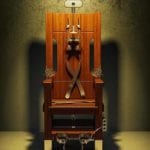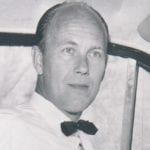 Weird Stuff
Weird Stuff  Weird Stuff
Weird Stuff  Mysteries
Mysteries 10 Tragic Disappearances and Deaths in Joshua Tree National Park
 History
History 10 Ways Childhood Really Sucked in the Old West
 Music
Music 10 Name Origins of Famous Bands from the 1990s
 Religion
Religion 10 Biggest Turnarounds by the Catholic Church
 Weird Stuff
Weird Stuff 10 Unbelievable Times Laws Had Unintended Consequences
 Humans
Humans Ten Historic Women Who Deserve Way More Credit Than They Got
 Movies and TV
Movies and TV 10 Films That Spawned Major Lawsuits
 History
History Ten Times Towns Were Wiped Off the Face of the Earth
 Creepy
Creepy 10 of the Most Disturbingly Haunted Public Houses in the UK
 Weird Stuff
Weird Stuff 10 Niche Subcultures That Are More Popular Than You Might Think
 Mysteries
Mysteries 10 Tragic Disappearances and Deaths in Joshua Tree National Park
 History
History 10 Ways Childhood Really Sucked in the Old West
Who's Behind Listverse?

Jamie Frater
Head Editor
Jamie founded Listverse due to an insatiable desire to share fascinating, obscure, and bizarre facts. He has been a guest speaker on numerous national radio and television stations and is a five time published author.
More About Us Music
Music 10 Name Origins of Famous Bands from the 1990s
 Religion
Religion 10 Biggest Turnarounds by the Catholic Church
 Weird Stuff
Weird Stuff 10 Unbelievable Times Laws Had Unintended Consequences
 Humans
Humans Ten Historic Women Who Deserve Way More Credit Than They Got
 Movies and TV
Movies and TV 10 Films That Spawned Major Lawsuits
 History
History Ten Times Towns Were Wiped Off the Face of the Earth
 Creepy
Creepy 10 of the Most Disturbingly Haunted Public Houses in the UK
10 Devastating Radiation Accidents They Never Tell You About
Humanity has been experimenting with nuclear power for decades, so it’s no surprise that a few accidents have occurred along the way. Actually, there’ve been more than a few. Chernobyl, Three Mile Island, and Fukushima are hardly the only times that people, power plants, or neighborhoods have been irradiated.
10 SL-1
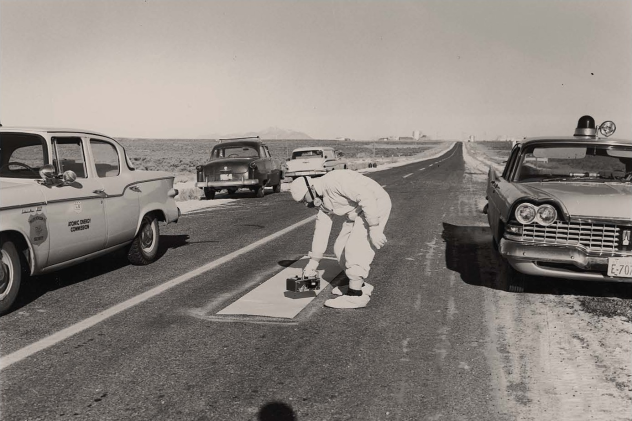
Stationary Low-Power Plant No. 1 (SL-1) was a small nuclear reactor located at the Idaho National Laboratory, which is in southeastern Idaho. It began operation in 1958 as part of a prototype nuclear power plant for the military and was used to train nuclear technicians. SL-1 was housed inside a large steel silo.
On December 23, 1960, SL-1 was shut down for maintenance. It was scheduled to resume operation on January 4. Three men, John Byrnes, Richard McKinley, and Richard Legg, were responsible for preparing the reactor the night before. They arrived at around 4:00 PM.
Alarms went off at the laboratory’s firehouse at 9:01 PM. Firefighters arrived with radiation detectors and found nothing amiss. The control room looked perfectly normal, though none of the three men were there. When the firefighters began to approach the stairs leading to the silo, however, their detectors indicated dangerous amounts of radiation.
Soon, men equipped with radiation suits and better detectors arrived. Two of them reached the top of the stairs and finally got a look at the reactor. The inside of the silo was a nightmare. Water from SL-1 flooded the floor, which was also littered with debris. Byrnes lay dead in it, and McKinley lay nearby, moaning. Legg was still nowhere to be found.
Four men ran in and carried McKinley out on a stretcher. They got him into an ambulance, but he died a few minutes later. No one knew what to do with his radioactive body, so they drove it out into the desert and covered it with lead blankets for the time being. Legg was found later that night, impaled against the ceiling of the silo by a control rod. It took six days to retrieve his body.
It was eventually determined that an explosion occurred when Byrnes lifted SL-1’s central control rod far more than was necessary to restart the reactor. The reaction went out of control instead. It was speculated that this was accidental; perhaps the rod was stuck, had to be yanked, and then slid out too far. Others believe that Byrnes intentionally lifted the rod to commit suicide, since his marriage was falling apart.
It took months to dismantle SL-1 and decontaminate the pieces. The men’s hands had to be removed from their bodies and buried as radioactive waste. Byrnes, McKinley, and Legg were buried in lead coffins.
9 Church Rock Uranium Spill
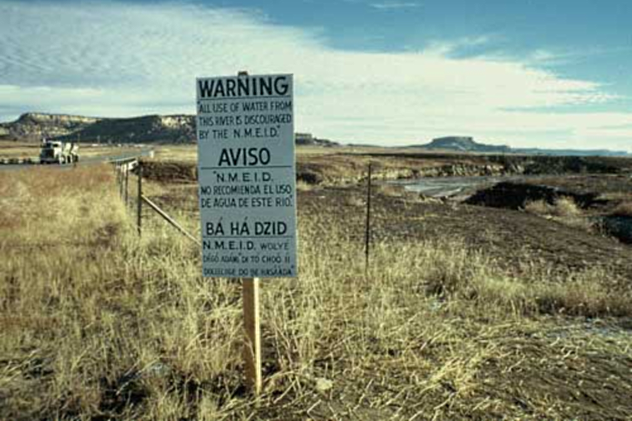
Not counting nuclear bomb tests, what was the largest release of radioactive material in US history? If you guessed Three Mile Island, you’re wrong. That unenviable title belongs to a dam break in Church Rock, New Mexico.
Church Rock is a small town located inside the Navajo Nation in northwestern New Mexico. It was once a major uranium mining site. There are 20 abandoned uranium mines and processing mills in the area. Most of the uranium was mined for use in nuclear weapons. For every pound of concentrated uranium produced, thousands of pounds of tailings were also created. This radioactive byproduct was often dumped in tailings ponds.
On the morning of July 16, 1979, at a processing mill operated by the United Nuclear Corporation, a tailings dam broke, releasing 94 million gallons of contaminated wastewater and 1,100 tons of radioactive tailings into the Puerco River. At around 6:30 AM, Church Rock resident Robinson Kelly went outside to find the Puerco, a normally dry arroyo, rushing with yellow-tinted water. Kelly described it as the “foulest” odor he’d ever smelled.
The water released by the dam had a pH of 2 and was filled with radioactive uranium, radium, thorium, polonium, and many other metals, which were deposited in the riverbed. By noon, the waters had receded enough for people to wade across the arroyo to retrieve livestock. Those who did so developed blisters and sores on their legs and feet. Shortly after the dam was repaired, the river was 6,000 times more radioactive than acceptable levels.
The Navajo Tribal Council asked to have Church Rock declared a disaster area but was denied. Some of the contaminants in the wastewater emit alpha radiation and can cause cancer. That radiation doesn’t go away overnight. Thorium-230 has a half-life of 80,000 years, for example.
8 NRX
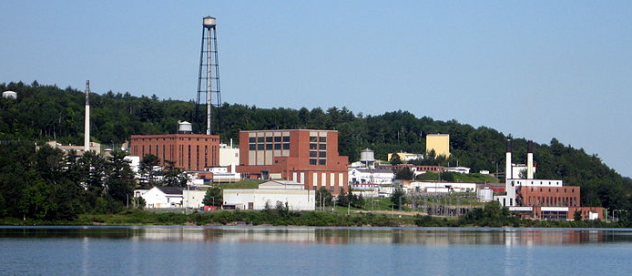
The NRX reactor at Chalk River Laboratories in Chalk River, Ontario, began operation in 1947 and was used for experiments by the United States and Canada. The reactor could have up to 12 control rods lowered into it. Seven were enough to completely stop any reaction. Four of them, referred to as the safeguard bank, were linked to lower simultaneously. The control rods were moved by magnets, meaning that if the magnets failed, the rods would automatically fall into the reactor and shut it down. A pneumatic air pressure system was used to raise the rods or even to quickly push them down faster than gravity could alone.
All of those safety measures still weren’t enough. On December 12, 1952, someone working in the basement below the reactor accidentally opened the valves linked to the control rods’ pneumatic system, reducing the air pressure above the rods. Several rods began to rise out of the reactor. The supervisor ran down to the basement and closed them, which should have pushed the rods back down. But for reasons not fully understood, they didn’t fall all the way back into the reactor.
The supervisor called the control room and told an operator which numbered buttons to push to make the pneumatic system force the rods down. However, he accidentally gave the number for the button that withdrew the safeguard bank. The supervisor realized his error right away, but the technician had already put the phone down and pressed the buttons.
The reactor’s power output began to ramp up dramatically. The technicians eventually managed to get it back down, but not before one or more explosions inside the reactor created several ruptures, leaking 1 million gallons of radioactive water and releasing radioactive gas into the atmosphere.
The water had to be pumped out and dumped in shallow trenches not far from the Ottawa River. The NRX reactor had to be buried as radioactive waste. (A new one was constructed.) Future US president Jimmy Carter was involved in the cleanup.
Chalk River Laboratories had another incident involving a different reactor in 1958. A fuel rod caught fire, spreading fission products throughout its building. The ventilation system was also jammed open, releasing gas downwind. Technicians had to repeatedly run by the fire and toss wet sand on it to extinguish it.
7 Baneberry
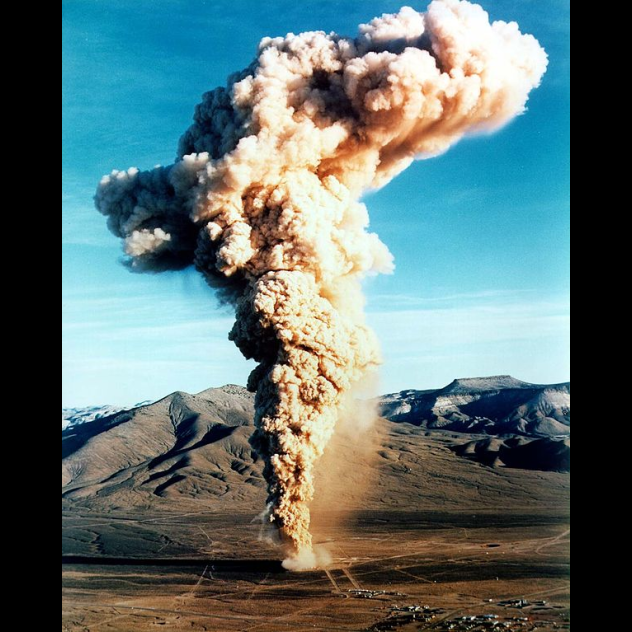
Baneberry was a 10-kiloton nuclear bomb that was detonated 270 meters (890 ft) underground at Yucca Flat, part of the Nevada Test Site, on December 18, 1970. Underground nuclear testing had been the norm since 1963 as a result of the Partial Test Ban Treaty, and such tests were certainly less hazardous than good, old-fashioned 1950s mushroom clouds. A week before Christmas in 1970, however, geology threw scientists a curveball.
Baneberry was detonated at 7:30 AM, and everything seemed normal. Then, at 7:33, a fissure opened up about 90 meters (300 ft) from the bomb’s emplacement hole, and radioactive dust and gas spewed into the sky. It continued to do so even after the ground above the detonation collapsed. (Such collapses are normal for underground detonations.) Gas visibly vented for another 24 hours.
The cloud from the test was visible from Las Vegas, something that hadn’t happened in years. The radioactive dust reached a height of 3,000 meters (9,800 ft) and was carried into several adjoining states. Fallout from the unexpected plume rained down on 86 test site workers. Two of them died from leukemia four years later.
Testing at the Nevada Test Site was suspended for six months while the cause of the Baneberry incident was investigated. It was determined that the ground into which the device was inserted had an abnormally high water content, causing the fissure to open.
6 Acerinox Plant
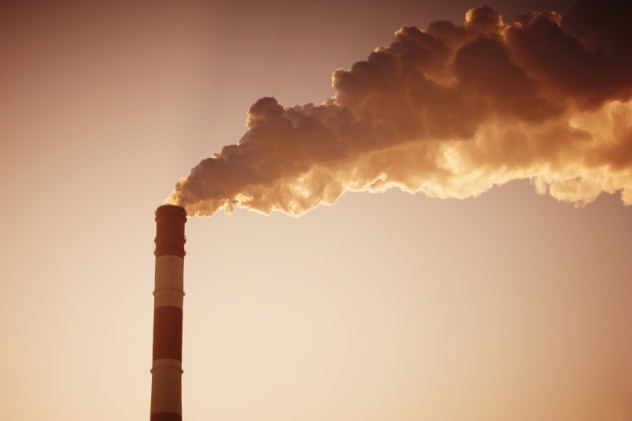
Acerinox is a Spanish company that produces stainless steel. In May 1998, a cesium-137 source ended up at one of their scrap metal reprocessing plants, located in Los Barrios, Cadiz. Although the plant had monitoring equipment to catch dangers like this, the source made it through and was melted in one of the ovens.
A radioactive cloud was promptly released into the atmosphere. The plant’s chimney detectors didn’t catch that, either, but France, Germany, Austria, Switzerland, and Italy did. Radioactivity was about 1,000 times greater than normal, and the ashes produced at the plant were radioactive enough to be dangerous.
Six plant workers suffered minor cesium-137 contamination. The plant had to be decontaminated, as did two other facilities that received its waste. The incident resulted in 40 cubic meters (1,400 ft3) of contaminated water, 2,000 metric tons of radioactive ash, and 150 metric tons of contaminated equipment. The cleanup and lost productivity at the plant amounted to $26 million. As far as radiation incidents go, it was a happy ending.
5 Chuetsu Earthquake
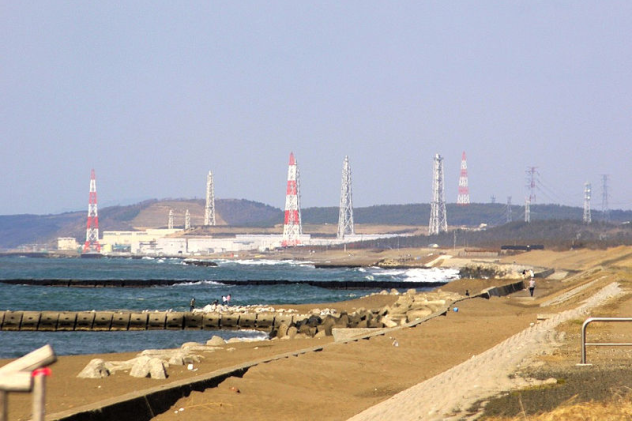
The Kashiwazaki-Kariwa Nuclear Power Plant (KKNPP) in Japan’s Niigata Prefecture can generate more power than any other power plant in the world—when it’s running. Since it became fully operational in 1997, one scandal after another has repeatedly forced it to shut down some or all of its seven reactors. Examples include concealing evidence of stress cracks and covering up the fact that the plant was built near fault lines.
That last bit came to light after the Chuetsu earthquake occurred on July 16, 2007. The magnitude 6.8 quake’s epicenter was only 24 kilometers (15 mi) offshore from the plant. The shaking was greater than the plant was designed to withstand; it was built before Japan updated their earthquake standards in 2006.
The ominous dry run for the later Fukushima Daiichi disaster damaged KKNPP and its reactors. The Tokyo Electric Power Company acknowledged that 1,200 liters of slightly radioactive water leaked into the sea and that dozens of barrels of low-level nuclear waste broke open during the quake. An exhaust pipe leaking radioactive iodine was also reported.
A report issued on July 19 by the Nuclear Information and Resource Service (NIRS) claimed the release of radioactive material to be much worse. According to NIRS, the water that leaked into the sea came from the irradiated fuel pool of one of the reactors. Another reactor had been releasing radioactive steam since the earthquake. The Associated Press also reported large amounts of damage to the plant’s infrastructure, with cracks and leaks seemingly everywhere. Liquefaction (formerly solid ground turning to mud) had occurred under parts of KKNPP.
4 K-431
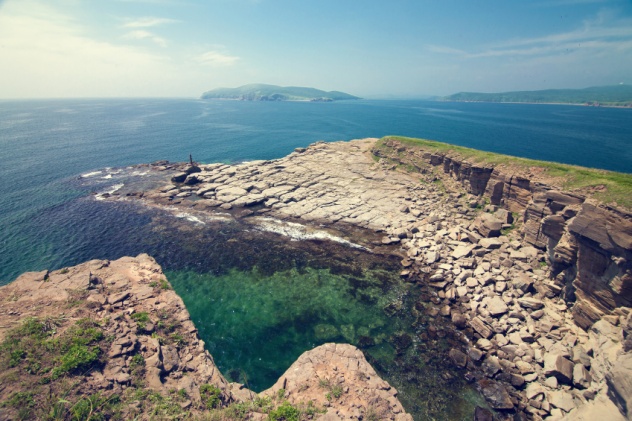
Chazhma Bay, near Vladivostok, is home to a naval base that was classified during the Cold War. On August 10, 1985, K-431, an Echo-II nuclear submarine, was docked at the base. Leaks in the seal of the upper lid of one of its two reactors were being repaired. Both reactors had been refueled the day before.
A boat passing by in the bay created a large wake, rocking the ship servicing K-431. The ship’s crane arm tore all of the reactor’s control rods free. It wasn’t long before a massive steam explosion blew the 12-metric-ton upper lid and all of the fuel assemblies straight out of the reactor compartment and destroyed the pressure hull. The explosion instantly killed 10 people.
A radioactive plume rose 50 meters (160 ft) into the air and drifted to the nearby Dunai Peninsula, leaving a 3.5-kilometer-long (2.2 mi) trace of radioactive fallout. The bay floor and adjacent waterfront were contaminated with cobalt-60. Radiation levels reached 16,000 times normal. A fire started and took four hours to put out. Radioactive material was released from K-431 for seven hours.
Of the 2,000 people who responded to the accident and decontaminated the sub, 290 received sizable doses of radiation, and 10 suffered acute radiation sickness. The damaged K-431 was eventually tied up at a nearby submarine base (but not dry-docked). The incident remained classified until 1993.
Later that year, sediments from Chazhma Bay still had 2,000 times more radiation than normal. Certain areas in the bay had radioactivity equivalent to 3,000 chest X-rays per hour in the 1990s. By the 2000s, the Dunai Peninsula still showed radiation levels equal to 30–400 chest X-rays per hour. The bay itself is additionally polluted from use as a scuttling site for old nuclear submarines. Around 30,000 people live near it.
K-431 was finally dismantled for scrap in 2010. The process was closely monitored for radiation spikes.
3 Rocky Flats
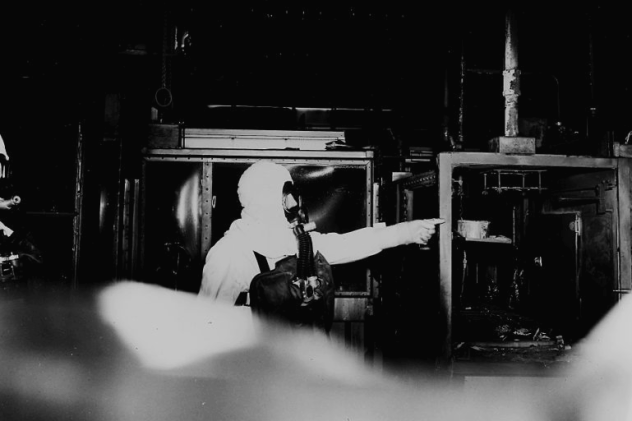
The Rocky Flats Plant was located 26 kilometers (16 mi) northwest of downtown Denver. It made plutonium triggers for nuclear weapons. Plutonium isn’t a particularly safe substance; it can even spontaneously start to burn with no external ignition source.
On September 11, 1957, a fire broke out in Building 71, a plutonium processing building. Although the area was designed to be fireproof, it was soon ablaze. The entire building was threatened.
The men fighting the blaze knew that they shouldn’t use water on a plutonium fire. Doing so could cause a criticality event. The blue flash signaling such a chain reaction would have also heralded the fact that they’d all just received a lethal dose of neutrons. However, the men were desperate and brought in the water.
Luckily, there was no blue flash. Instead, a deafening explosion blew the lead lid off the top of the 46-meter (152 ft) smokestack above, and flames shot 60 meters (200 ft) above its rim. The fire burned for another 13 hours until it was finally extinguished . . . with more water.
Radioactive smoke poured over the Denver area the whole time. It’s impossible to know how much plutonium was released, as most of the monitoring equipment that could have measured it was destroyed. The fire also destroyed 620 filters, which hadn’t been changed in four years and were full of plutonium and other byproducts. A school 19 kilometers (12 mi) from Rocky Flats had heavy plutonium contamination in its soil. Plutonium was detected as far as 50 kilometers (30 mi) away, and the plume likely traveled farther than that.
Local citizens weren’t notified or evacuated, and the fire was kept out of the news. It wasn’t until a similar fire on Mother’s Day in 1969 that the Department of Energy finally came clean. After that fire, areas near Rocky Flats were found to have concentrations of plutonium greater than Nagasaki. It was also revealed that 5,000 barrels had stood out in the open for 11 years and leaked radioactive waste into the groundwater and soil.
The Rocky Flats area is now a wildlife refuge. Plutonium-239, the most common plutonium isotope, has a half-life of 24,000 years.
2 Tomsk-7
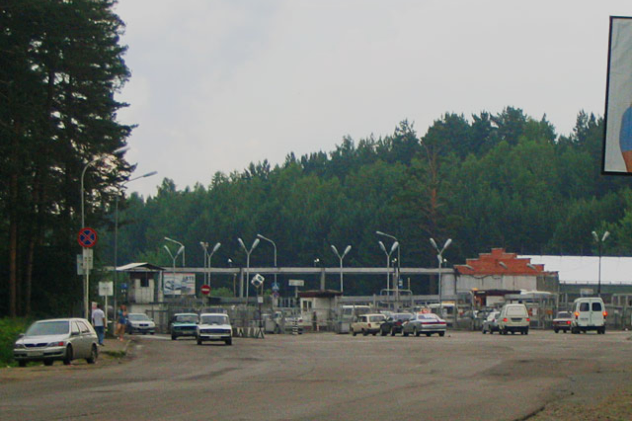
Tomsk-7, now known as Seversk, is a Siberian city about 3,000 kilometers (2,000 mi) east of Moscow. During the Cold War, it was a so-called “secret city,” home to 107,000 people who worked at the Siberian Chemical Combine (SCC), a facility that produced uranium and plutonium for the USSR’s nuclear weapons program. The workers’ families also lived at Tomsk-7 (not to be confused with the nearby city of Tomsk).
The SCC had a number of nuclear accidents during its operation. The most well-known occurred on April 6, 1993. That day, a nitric acid solution was being introduced into a storage tank called Object 15 in order to separate plutonium from spent nuclear fuel. Object 15 contained approximately 8,700 kilograms (19,200 lb) of uranium and 450 grams of plutonium. Compressed air was required to ensure that the nitric acid and spent fuel mixed properly.
Not enough compressed air was pumped into the tank, probably due to human error. The solutions settled into layers inside the tank instead of mixing. Chemical reactions in the nitric acid layer caused the temperature and pressure inside the tank to rise. Object 15 was built to withstand 12 atmospheres of pressure. It exploded at 18 atmospheres, blowing out the walls on two floors of its building and setting the roof on fire.
The resulting plume of radioactivity contaminated 120 square kilometers (50 mi2) around the SCC. Radioactive snowfall over the next few days caused some areas to have 100 times more radiation than normal. Soil in the affected area had significantly increased levels of cesium-137 and plutonium for years afterward.
Matters weren’t helped by the fact that the SCC area was probably already severely contaminated. Massive amounts of nuclear waste are stored there, and the facility had around 30 major accidents during its operation. The population of Seversk has been continuously exposed to radioactivity.
1 Santa Susana Field Laboratory
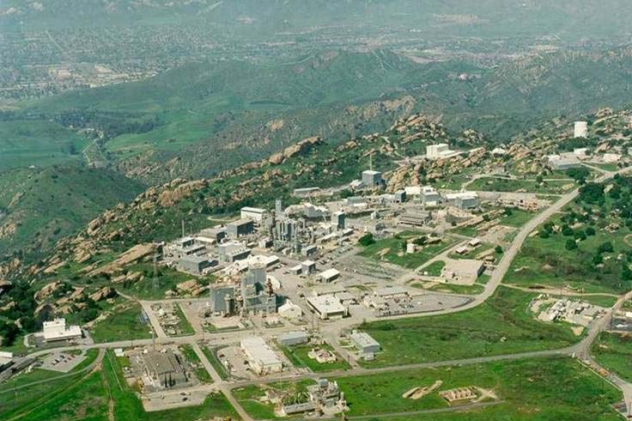
The Santa Susana Field Laboratory (SSFL), located near Los Angeles, spans 2,850 acres and was used by private corporations to test rocket engines for NASA. It’s contaminated with both toxic chemicals and radiation. Cleaning the place up is incredibly difficult due to the sheer level of pollution, and the situation is exacerbated by the poor condition of many of the complex’s structures. Worst off is Area Four, which contained 10 nuclear reactors. The largest reactor, referred to as the Sodium Reactor Experiment, partially melted down on July 13, 1959.
According to a former employee, radiation levels in the building where the meltdown occurred went “clear off the scale.” To prevent an explosion that could have been comparable to Chernobyl, radioactive gas had to be vented into the sky. Afterward, workers’ attempts to repair the damaged reactor only succeeded in generating more gas. For the next several weeks, a seemingly endless supply of radioactive gas was vented from the building, generally at night. People living nearby in places like Simi Valley, Chatsworth, and Canoga Park were “bombarded” with radiation.
Everyone involved in the incident was sworn to secrecy. Six weeks later, the Atomic Energy Commission reported that a minor incident had occurred and that no radiation was released. The truth wasn’t revealed until 1979. Other reactor accidents, also involving the release of radioactive gas, occurred in Area Four during the 1960s.
Radiation from the laboratory is believed to be linked to increased incidences of cancer in nearby communities. One local resident recalls every house on her street having at least one cancer case. In 2007, the CDC found a 60 percent higher rate of some cancers among those living within 3 kilometers (2 mi) of SSFL.
Anthony is an editor at Listverse. He considered playing “Radioactive” by Imagine Dragons while writing this article.




